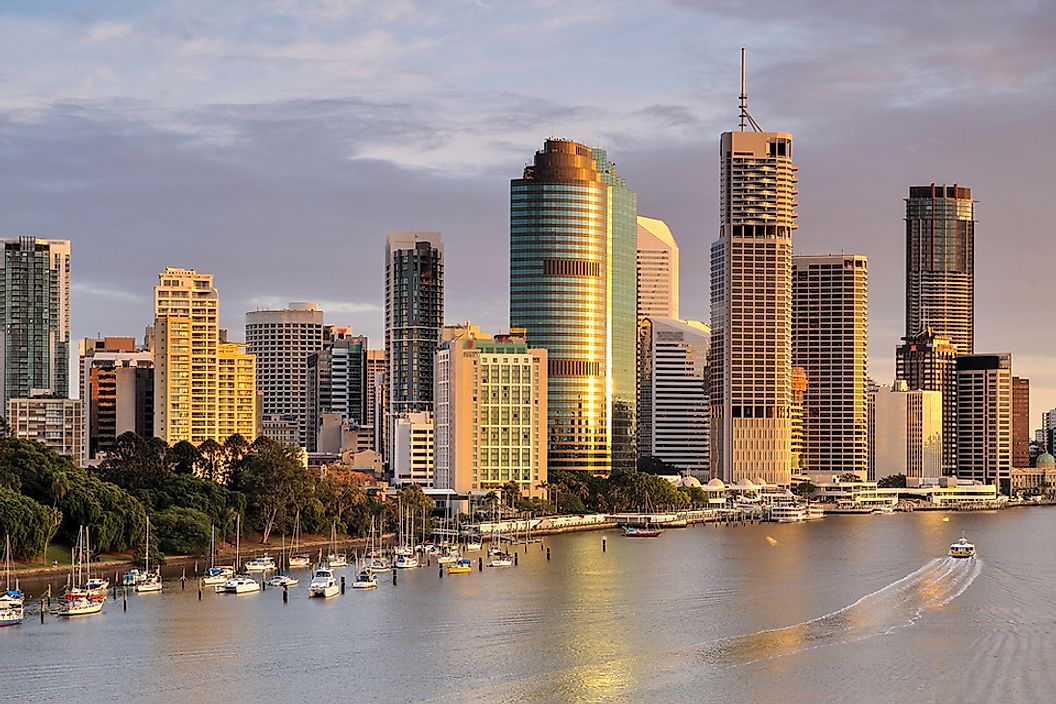What Is the Capital of Queensland?

Queensland is the second largest state in Australia in terms of area. It is known for the famous Great Barrier Reef, the magnificent Queensland Islands, and the world’s largest and most extensive subtropical rainforest. The capital of Queensland is Brisbane, a city known for its winter sunshine, outdoor activities, and water sports.
City Overview
The port city of Brisbane is the third largest city in Australia and it is also the capital of Queensland. It is located on both sides of Brisbane River, 12 miles from the river’s mouth at Moreton Bay. It is a transport hub that links several road and rail networks. The port of Brisbane can accommodate ships carrying up to 34,000 tons, and is used to export wool, dairy products, mineral sands, and preserved foods. The metropolitan area has a population of about 2.4 million, and a population density of 380 people per square mile.
Urban Structure
Brisbane’s central business district covers approximately 0.8 square miles, and many of its streets are named after the royal family. Although much of the city is occupied by modern buildings, some ancient heritage buildings dating back to early 19th century have been preserved by the city. The city is home to about 360 completed skyscrapers, 70 of which are taller than 300 ft. The building located at 1 William Street is the tallest, rising over 850 ft, but when completed in 2018, the Brisbane Skytower will reach height of 890 ft to become the tallest building. As recorded in 2016, 76.4% of residents lived in standalone buildings, 12.6% resided in apartments, and 10% resided in townhouses.
Climate
Brisbane experiences a humid subtropical climate, with hot, humid summers and cool, warm winters. Its proximity to the Coral Sea makes Brisbane's average temperature below the average temperature of other cities. During the winter the temperature drops to below 20 °C and between November and March the city experiences thunderstorms, accompanied by large hail storms that cause damage to vehicles. On average, the city experience 125 clear days annually.
Economy
Brisbane is considered a well-developed city, with modern financial, information, education, public sector, and administrative sectors. The service industry contributes to a large proportion of the economy followed by the port, petrol refining, and metal works. Tourism also plays a significant role by attracting thousands of tourists every year. Major international organizations have contact offices in Brisbane including electronic and distribution companies. The city prides itself in having a per capita income of AUD 57,772, which is the fourth largest median household income in the country. Between 1990s and the early 2000, the state government began developing technology and science industries as part of the "Smart State" initiative. Several research and biotechnology facilities were established including the Institute for Molecular Bioscience, located at the University of Queensland.
Governance
The city of Brisbane governs a large part of Brisbane’s metropolitan area, unlike other cities in which the metropolitan is governed separately. Since it was established in 1925, the city's urban area has grown beyond the council boundaries to become the largest local government in the country in terms of budget and population. It was formed when twenty smaller local governments merged to cover an area of approximately 528 square miles. The Lord Mayor and twenty-six councilors are responsible for governing the city council.







